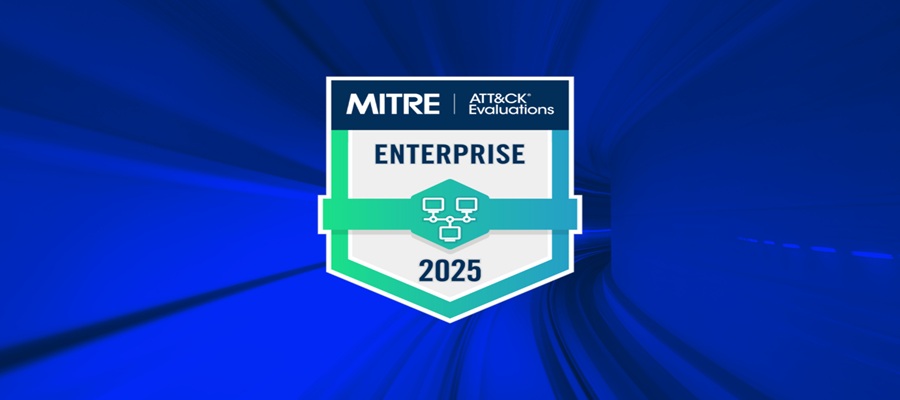Telecom
Hackers Could Decrypt Your GSM Phone Call

Researchers have discovered a flaw in the GSM standard used by AT&T and T-Mobile that would allow hackers to listen in.
Researchers from BlackBerry at DefCon security conference in Las Vegas, USA, presented an attack that can intercept GSM calls as they’re transmitted over the air and decrypt them to listen back to what was said.
And the vulnerability has been around for decades.
Most mobile calls around the world are made over the Global System for Mobile Communications standard; in the US, GSM underpins any call made over AT&T or T-Mobile’s network.
Regular GSM calls aren’t fully end-to-end encrypted for maximum protection, but they are encrypted at many steps along their path, so random people can’t just tune into phone calls over the air like radio stations.
The researchers found, though, that they can target the encryption algorithms used to protect calls and listen in on basically anything.
“GSM is a well documented and analyzed standard, but it’s an aging standard and it’s had a pretty typical cybersecurity journey,” says Campbell Murray, the global head of delivery for BlackBerry Cybersecurity.
“The weaknesses we found are in any GSM implementation up to 5G. Regardless of which GSM implementation you’re using there is a flaw historically created and engineered that you’re exposing.”
The problem is in the encryption key exchange that establishes a secure connection between a phone and a nearby cell tower every time you initiate a call.
This exchange gives both your device and the tower the keys to unlock the data that is about to be encrypted. In analyzing this interaction, the researchers realized that the way the GSM documentation is written, there are flaws in the error control mechanisms governing how the keys are encoded. This makes the keys vulnerable to a cracking attack.
“It’s a really good example of how the intention is there to create security, but the security engineering process behind that implementation failed.”
As a result, a hacker could set up equipment to intercept call connections in a given area, capture the key exchanges between phones and cellular base stations, digitally record the calls in their unintelligible, encrypted form, crack the keys, and then use them to decrypt the calls.
The findings analyze two of GSM’s proprietary cryptographic algorithms that are widely used in call encryption—A5/1 and A5/3.
The researchers found that they can crack the keys in most implementations of A5/1 within about an hour. For A5/3 the attack is theoretically possible, but it would take many years to actually crack the keys.
“We spent a lot of time looking at the standards and reading the implementations and reverse engineering what the key exchange process looks like,” BlackBerry’s Murray said.
“You can see how people believed that this was a good solution. It’s a really good example of how the intention is there to create security, but the security engineering process behind that implementation failed.”
The researchers emphasize that because GSM is such an old and thoroughly analyzed standard, there are already other known attacks against it that are easier to carry out in practice, like using malicious base stations, often called stingrays, to intercept calls or track a cellphone’s location.
Additional research into the A5 family of ciphers over the years has turned up other flaws as well. And there are ways to configure the key exchange encryption that would make it more difficult for attackers to crack the keys. But Murray says that the theoretical risk always remains.
Short of totally overhauling the GSM encryption scheme, which seems unlikely, the documentation for implementing A5/1 and A5/3 could be revised to make key interception and cracking attacks even more impractical. The researchers say that they are in the early phases of discussing the work with the standards body GSMA.
The trade association said in a statement to WIRED that, “Details have not been submitted to the GSMA under our coordinated vulnerability (CVD) programme. When the technical details are known to the GSMA’s Fraud and Security Group we will be better placed to consider the implications and the necessary mitigation actions.”
Though it may not be that surprising at this point that GSM has security issues, it’s still the cellular protocol used by the vast majority of the world. And as long as it’s around, real call privacy issues remain, too.
Telecom
Minister Claims Bandits Exploit Poor Network, Bounce Calls Off Multiple Towers

Bosun Tijani, minister of Communications, Innovation and Digital Economy, yesterday claimed that bandits and terrorists are able to communicate and coordinate their activities with ease because they exploit gaps in the country’s telecommunications network.

Bosun Tijani, minister of Communications, Innovation and Digital Economy,
Tijani, who spoke Politics Today, a Channels Television’s programme, on Friday, Tijani said the criminals exploit gaps in the country’s telecommunications network.
He also claimed the bandits use advanced technology to bounce calls across multiple towers in areas with poor connectivity.
“They weren’t using the normal towers; they bounced calls off multiple towers, which is why they favor areas that are largely unconnected,” he said.
When asked about reports that unregistered or fraudulently registered SIM cards are still in use despite the Bank Verification Number (BVN) and the National Identification Number (NIN)–Subscriber Identity Module linkage policies, Tijani said the issue is technically complex and the reports are not fully verified.
“Whether it’s fact or not, I do not know where you’re getting that from, and I do not know who has evidence that there are people with unregistered SIMs,” he added.
The minister stated that the federal government is investing in telecom towers in underserved regions, upgrading the country’s communication satellites to improve coverage, and expanding fiber-optic networks to strengthen the country’s digital infrastructure.
“If our towers are not working, our satellites will work. Nigeria is the only country in West Africa with communication satellites, and we are bringing new satellites to upgrade their capabilities,” Tijani said.
He added that these initiatives aim to ensure better connectivity for Nigerians while closing loopholes that criminals exploit, thereby enhancing national security.
The minister’s comments come amid rising concerns over insecurity in several parts of the North, where banditry, kidnapping, and terrorism have escalated in recent years.
There are also reports of bandits flaunting ransom payments on social media platforms such as TikTok, raising alarm among authorities and the public
Telecom
Sophos XDR Achieves its Best-Ever Results in the MITRE ATT&CK Enterprise 2025 Evaluation

Sophos, a global leader of innovative security solutions for defeating cyberattacks, has announced its best-ever results in the MITRE ATT&CK Enterprise 2025 Evaluation.

MITRE ATT&CK Enterprise 2025 Evaluation
Sophos XDR detected 100% of adversary behaviors (sub-steps)1 across two complex attack scenarios: Scattered Spider, which Sophos X-Ops tracks as GOLD HARVEST, a financially motivated cybercriminal collective, and Mustang Panda, which Sophos X-Ops tracks as BRONZE PRESIDENT, a People’s Republic of China (PRC) espionage group.
The Scattered Spider scenario included activity across Windows, Linux, and AWS cloud environments, and the Mustang Panda scenario focused on Windows only.
Further, Sophos achieved the highest-possible “Technique”-level rating for 86 out of 90 total sub-steps in the evaluation, by generating high-fidelity detections with details on execution, impact, and adversary behavior, providing clear who, what, when, where, how, and why insights.
Sophos XDR achieved:
- 100% detection coverage1 for all 90 adversary sub-steps across two complex attack scenarios across Windows, Linux, and AWS cloud environments
- Highest possible (“Technique”) ratings for 86 of 90 sub-steps, demonstrating deep visibility and actionable detections
- Highest possible (“Technique”) ratings for 61 out of 62 of sub-steps in the Scattered Spider scenario involving identity abuse, cloud exploitation, and data exfiltration
“Scattered Spider and Mustang Panda represent distinct threat profiles that challenge defenders in very different ways,” said Simon Reed, chief research and scientific officer, Sophos. “Achieving full detection coverage against both validates the accuracy and depth of Sophos’ analytics and demonstrates how the company’s AI-native XDR platform converts complex telemetry into clear, actionable intelligence, helping security teams detect, understand, and stop advanced attacks with confidence.
“Sophos’ consistently strong performance in these rigorous evaluations underscores the power and precision of our threat detection and response capabilities, and our commitment to stopping the world’s most sophisticated cyberthreats.
“Over the five years that Sophos has participated in ATT&CK Evaluations, we have continually invested in strengthening our platform, and that investment has translated into stronger results year after year – both in the evaluations, and in the security outcomes we deliver for our customers.”
These results demonstrate the power of the Sophos XDR platform to defend against sophisticated cyber threats. Every day, Sophos processes 223+ terabytes of telemetry in Sophos Central, generating 34+ million detections and automatically blocking 11+ million threats.
This scale of customer insights ensures that Sophos’ detections are being tested and improved to provide continuous protection while delivering stronger outcomes for organizations worldwide.
Understanding The Threat Actors
Sophos X-Ops has tracked GOLD HARVEST (Scattered Spider) since 2022, observing a loosely affiliated cybercriminal collective driven by both financial motives and a desire to elevate their reputations on underground forums.
Despite several arrests, operators and associates continue to launch high-profile attacks across the U.K. and U.S., at times partnering with major Russian-speaking ransomware groups.
Their sophisticated social engineering capabilities enable them to compromise even well-defended organizations, underscoring the importance of strong behavioral detections within modern security operations.
In parallel, Sophos X-Ops has monitored BRONZE PRESIDENT (Mustang Panda) for many years.
This long-running PRC espionage group conducts intelligence-led operations that align closely with priorities of China’s Ministry of State Security. Recent targeting includes activity against Tibetan communities surrounding the Dalai Lama’s 90th birthday, as well as intrusions on Thai government and military offices during periods of heightened regional tension.
BRONZE PRESIDENT remains one of the most active and persistent state-aligned threat actors operating today.
MITRE ATT&CK Evaluations are among the world’s most rigorous independent security tests.
They emulate the tactics, techniques, and procedures (TTPs) used by real-world adversaries to assess each participating vendor’s ability to detect, analyze, and articulate threats in alignment with the MITRE ATT&CK Framework.
These evaluations continually strengthen Sophos’ capabilities for the benefit of the organizations it protects. This was the seventh round of MITRE’s “Enterprise” ATT&CK Evaluation, a product-focused assessment designed to help organizations better understand how security operations solutions like Sophos EDR and Sophos XDR can help them defend against sophisticated, multi-stage attacks.
When evaluating EDR or XDR solutions, Sophos recommends reviewing MITRE ATT&CK Evaluations alongside other independent proof points.
Telecom
CBN, NCC to Launch Short Code for Swift Consumer Complaint Resolution

Central Bank of Nigeria (CBN) on Thursday announced plans to partner with the Nigerian Communications Commission (NCC) to develop an industry-wide short code for consumers to lodge complaints with financial institutions anytime, anywhere, even without internet access.

CBN
Dr Aisha Isa-Olatinwo, CBN Director, Consumer Protection and Financial Inclusion Department, disclosed this at a virtual Consumer Protection Town Hall meeting titled “Ask the Regulator”, organised by Enhancing Financial Inclusion and Advancement (EFInA).
She said the initiative addresses challenges faced by vulnerable consumers using feature phones who often have to visit bank branches physically to report issues amid the convergence of telecom and banking services.
Isa-Olatinwo said the CBN had achieved 94 per cent month-on-month timely resolution of consumer complaints, adding that the apex bank had streamlined processes and partnered with banks to balance consumer protection with financial system stability.
An EFInA poll presented at the event revealed that 61 per cent of respondents experienced failed transactions in the past 12 months, while 26 per cent had reversals within 24 hours and 54 per cent between 24 and 48 hours.
Other complaints included six per cent for fraud, 14 per cent for hidden charges and 15 per cent for poor customer service, with 66 per cent of respondents aware of complaint escalation steps.
President of Consumer Advocacy Foundation of Nigeria (CAFON), Mrs Sola Salako-Ajulo, lamented that consumers often feel unprotected and urged introduction of fraud insurance for instant reversals, shifting the burden of proof from customers.
She said: “What is missing in our system—unlike more developed economies—is fraud insurance, where banks reverse reported fraud immediately, refund consumers, and investigate later.”
Mr Ajibade Laolu-Adewale, Chairman of Committee of e-Business Industry Heads (CeBIH), represented by Mr Adeyemi Salisu, stressed that banks must resolve disputes between acquiring and issuing banks without redirecting customers to merchants.
The short code initiative is expected to enhance financial inclusion by providing accessible redress mechanisms in Nigeria’s evolving digital payment ecosystem.

 Telecom2 days ago
Telecom2 days agoMinister Claims Bandits Exploit Poor Network, Bounce Calls Off Multiple Towers

 E-Financial2 days ago
E-Financial2 days agoFIRS says MOU with DGFIP Won’t Compromise Nigeria Tax Data Sovereignty

 News3 days ago
News3 days agoFRC, ICPC Seal Anti-corruption Alliance

 Telecom3 days ago
Telecom3 days agoMoMo PSB Brings Relief to UNILAG Students with Ultra-Cheap Bus Fares

 News3 days ago
News3 days agoDebt Rises in AI Data Centre Boom

 General News2 days ago
General News2 days agoTop Nigerian Startups Secure Funding Boost @ iHatch Demo Day Awards

 Telecom2 days ago
Telecom2 days agoGoogle.org Backs CyberSafe’s Resilio Africa to Shield 2m People from Cyber Threats

 Telecom2 days ago
Telecom2 days agoCBN, NCC to Launch Short Code for Swift Consumer Complaint Resolution
























